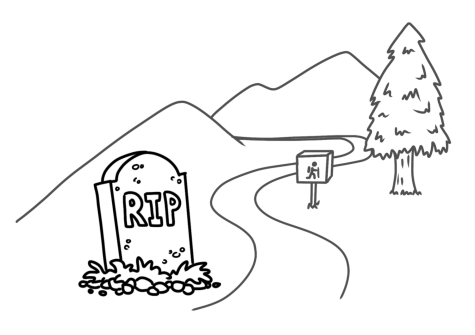Marin’s facade: Hiding poor health under wealth
June 2, 2022
*Content warning: mention of suicide*
Marin County is known for its picturesque landscapes and thriving community members that foster a lifestyle second to none. The endless trails tucked away in the mountains create perfect locations for hiking and biking, and the waterfront paths are optimal for dog walking with a view. Many residents of our affluent county belong to clubs such as the Bay Club, Mt. Tam Racquet Club, Tiburon Peninsula Club or the Meadow Club, where members can exercise on their choice of elaborate gym equipment or use the golf course. Houses are worth millions and the public schools are top tier. While not all residents experience Marin in the same way, there is a clear overarching trend of physical health and prosperity among those who live here.
In fact, Marin was ranked as the healthiest county in California in the official 2022 County Health Rankings and Roadmaps on April 27. Marin has held this position for “12 of the 13 years the rankings have been compiled,” according to the County of Marin. Since the rankings are based on the quality of life, clinical care and social and economic factors, I was not initially surprised that Marin came out on top. However, upon further thought, I realized that while Marin may check all the boxes for this annual survey, it simultaneously lacks in so many areas of human wellbeing and is far from the picture of health based on its substance abuse and poor mental health rates. But the issue here isn’t in the survey itself. Rather, the problem lies in the ideas of health that it’s based on, which are deeply ingrained in society today. As a community, we must redefine health to include a broader picture of wellbeing that is both external and internal.

In Marin, mental health issues tend to stay under the radar or get pushed to the bottom of the priority list when academic competition is so strong among students and financial pressure is so prevalent among adults. This pattern is reflected in annual statistics. According to the 2019 Community Health Needs Assessment (CHNA), the percentage of adults in California taking daily medication for mental health issues is 11 percent; in Marin County, it’s 15 percent. While this difference in percentage may appear small, this deviation in mental health needs is worrisome, particularly because of its apparent correlation with suicide rates. The suicide rate per capita in California is 9.8; in Marin County, the rate is 15.6. The Marin County Coroner Division Annual Report showed that Marin faced 51 suicides in 2021 alone. Devastating statistics like these serve as a wake-up call. Marin County cannot exist under a facade of good health when its residents are deeply struggling on the inside.
Additionally, when people hide their mental health needs due to the flawed norms that exist in Marin, they become more susceptible to the phenomenon of self-medicating. Self-medication, along with other reasons that people experiment with drugs or other substances, has led to catastrophic and horrifying trends in Marin. The aforementioned CHNA deduced that the per capita rate of teens who have been high from drug use in California is 38.3, while Marin County boasted a rate of 48.7. This difference is alarming, given the stereotypes that Marin residents tend to place on those addicted to drugs and living on the streets — stereotypes that develop from privilege and denial that one’s drug use could ever suffer the same fate, of course. The Marin Coroner Report cited 61 overdose-related deaths and 34 fentanyl-related deaths, all in 2021.
As startling as those statistics may be, Marin’s high rates of substance abuse do not end there. Twenty Marin residents died of alcoholism in 2021. California counties averaged 1,203 alcohol-related arrests in 2019, while Marin County had 1,501. This implies severe danger for people both on and off the road, as a portion were a result of driving under the influence. However, the least surprising yet petrifying statistic is that the per capita rate of teens who reported binge drinking in 2019 was 5.8 in California; in Marin County, the rate was 16.2. This is almost three times what other California counties experience. Further, there is no debate on alcohol and other substances’ damage to young brains, so how can a community with such poor numbers in this regard be rightfully placed on a pedestal of health over and over again? The answer is simply that it shouldn’t. Not until a change is made.
While I feel remarkably fortunate to live in a place like Marin, where the hiking trails really are endless, the dog walking is unlike any other and the opportunities inside and outside of school seem infinite, every year it becomes clearer that these attributes mask the unfortunate undertones of our county. I urge people to acknowledge the shortcomings of such health assumptions presented in county rankings and consider how they can assist Marin in truthfully achieving that top spot — one that reflects well-being on paper and within each individual. The ranking itself suggests that we have the financial and physical means to initiate a cultural shift, so now is the time for Marin residents to step up.
If you or loved ones are in need of help:
Marin Suicide Prevention & Crisis Hotline 415-499-1100
Alcoholics Anonymous SF/Marin 415-499-0400
Marijuana Anonymous: California, North Bay 707-583-2326
Narcotics Anonymous 877-612-7837























